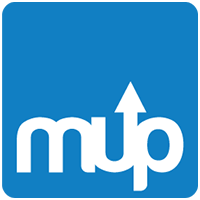Whether you want to adapt your teaching program or create your academic space on Internet, it’s important to know how to create educational content for your students. At the moment, education is not understood without digital content, because students are digital natives, and, of course, because of the great possibilities they offer.
For a long time, Internet has been seen as an entertainment tool or a mere source of information. However, its potential for education is amazing. As a result, educational digital content is becoming more and more relevant in today’s education.
Over the last few years, the creation of educational content has evolved from the mere copying of textbooks and their upload to the Internet to the implementation of resources adapted for computers, tablets or mobile devices, with all the possibilities offered by current connectivity.
In this way, it has evolved from adapting to a PDF or PPT file, to the use of video tutorials, podcasts, e-books, webinars, online courses, social networks, etc., which has allowed greater interactivity between teachers and students.
This new approach to digital educational content opens up a world of possibilities that make education easier. For example, it allows both teachers and students not to depend on where they are, even though an Internet connection is not available, since many of them are downloadable and can be checked “offline”.
How to create educational content? 5 tips
If you don’t know how to create valuable educational content, from Pedagoo we bring you 5 simple steps:
- Before we start… make a plan: You should define very well the goals and purpose of the course. They will depend on the agenda, the level of difficulty and the evaluation methods. So, before you look into how to create educational content, check who your audience is and their needs.
- Research process: This step requires more hours of work. Consider students and the purpose of the course to organize educational content. Once you’ve finished your research, make sure you understand the topics you want to share and have an expert eye to select the final content. However, you should always check your sources.
- Enrich your content: You must contextualize the content through your knowledge and experience. In addition, it is very important that you answer questions and make sure that your students know how that knowledge applies to their learning goals. You can also tell your students where they can find additional content.
- Is your content ready? Distribute them properly!: You have many options, educational platforms like Pedagoo, forums or learning communities, social networks… Our recommendation is to keep a schedule so your students can expect your content on a regular basis. Don’t forget to share each new post!
- Store and organize your contents: you should not just focus your teaching work on selecting and sharing contents but also on preserving and tracking the information you submit. How can you do this? By storing, organizing and filing the contents. You should keep track of where, when, how and what content was displayed.
Check out these tools to create educational content
Looking for ICT tools for teachers to improve your classes? In that case, this is the article you were looking for. With them you can, among other things, create online presentations, work in shared documents or evaluate in an original and fun way.
- Goconqr: Thanks to this tool you can create mindmaps, notes, diagrams… Through the following video you can watch a tutorial on how to create a mindmap.
- Canva: This is a popular tool that offers new learning experiences. For example, it helps students to develop their visual communication and creativity skills. You can use it to create, infographics, documents, etc. Or also, you can use one of it many templates for your own creations.
- EdPuzzle: You can use this tool to create educational videos. For example, you can even edit exisiting videos to help students develop understanding skills, identify main ideas, etc. Then, you can also create questions for students to answer. Here you can watch a tutorial on the tool!
- Flipgrid: You can generate class discussions with this tool. The platform includes different topics. Then, you, as a teacher, can propose them in the classroom. Finally, students can participate by recording their points of view in short videos. In this way, students can improve skills such as public speaking or learn different ways to express their ideas.
- Play Posit: Like with EdPuzzle, you can create interactive videos with this tool. One of it features is that you can introduce pauses so students can answer questions and deepen in the knowledge of a particular topic. Then, teachers can track the students who have already answered the questions.
In this link you can find many more tools to create your educational content!








